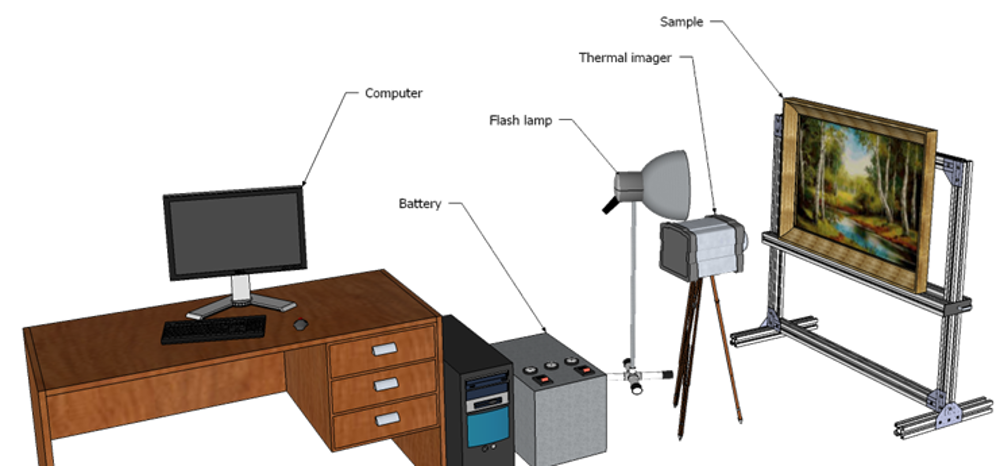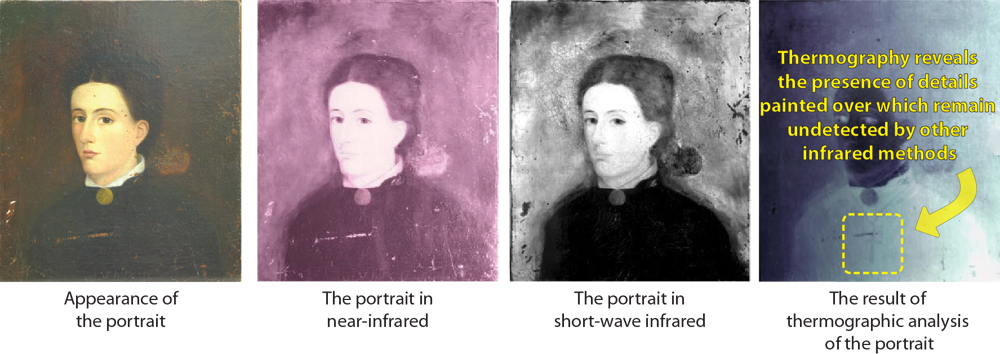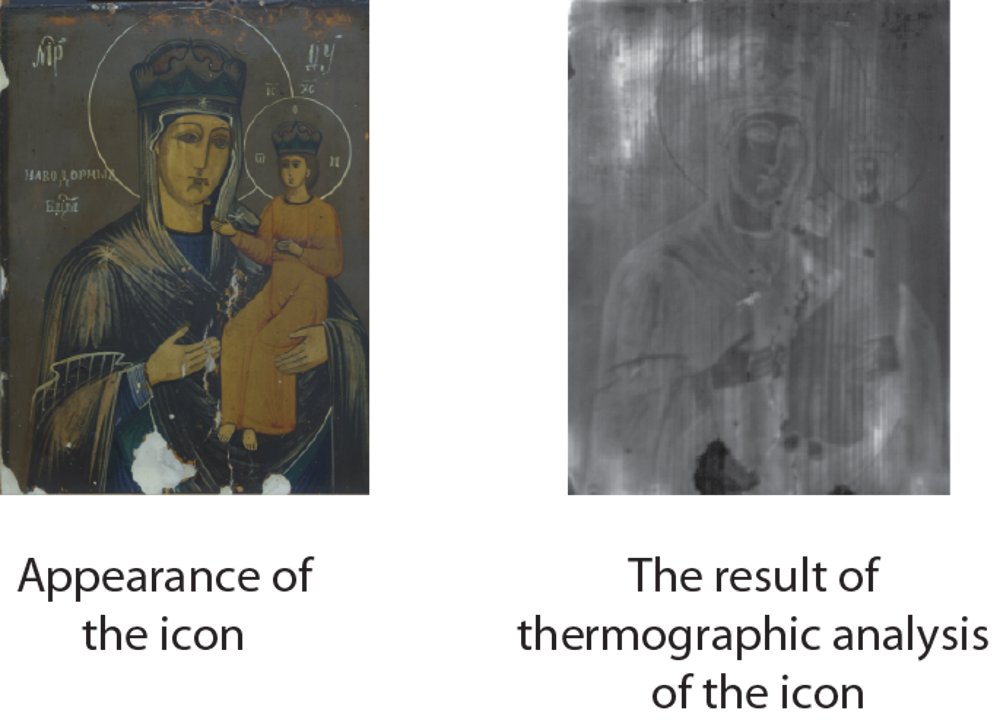Thermography
Thermography is a full class of evaluation methods which came from industry into analysis of art. The method is based on the premise that the internal structure of the analyzed object affects the surface temperature pattern. This fact allows for concluding on the internal structure by seeing how surface temperature evolves in time.
During the analysis the piece of art is stimulated with a short light flash which slightly (several degrees) increases its temperature. The surface temperature is recorded by a thermal camera as a series of snapshots. These snapshots are mathematically processed then in order to extract necessary information. These raw thermographic data undergo mathematical processing and final result image is extracted.
Thermography utilizes middle and far infrared bands (3-5 mkm and 8-14 mkm). A typical thermographic setup includes thermal imager, flash system and the computer for frame grabbing.

Thermography is extremely useful when it is necessary to detect the presence of subsurface detachment defects. These can be hardly (or not at all) detectable by infrared vision because of the depth of structural defects. On the other hand, X-ray radiography may also be of little use because of the extremely small thickness of detachments. For example, in the figure below one can see the result of inspection of an unattributed portrait. The coat of the person in the picture is painted with some kind of carbon-containing pigment like ivory black, which makes it opaque to infrared. Revealing the necklace in this case was possible by the means of thermographic analysis only.

Advanced algorithms applied to raw thermographic data collected from the works of art analyzed allow for separation of patterns which correspond to different structural features such as the surface drawing, defect(s) and the structure of the support.

